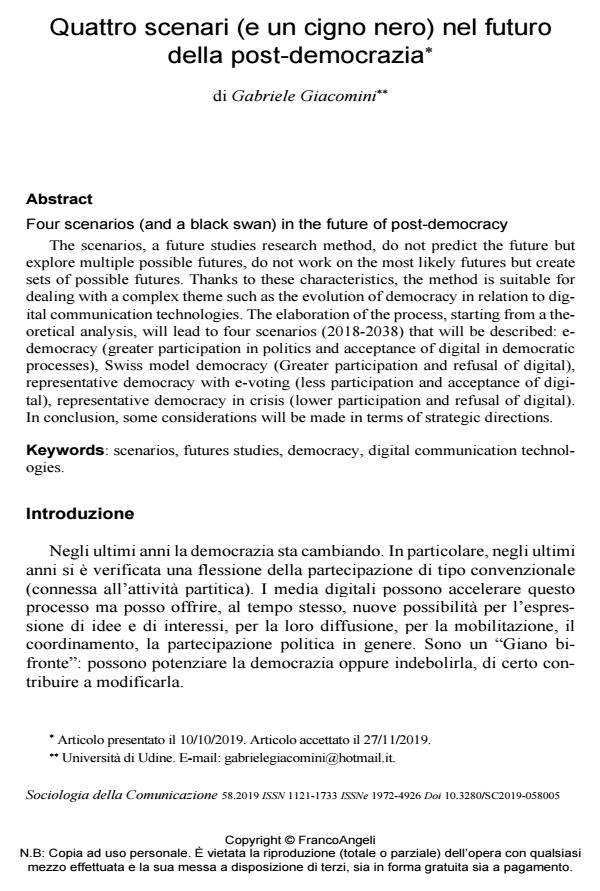Quattro scenari (e un cigno nero) nel futuro della post-democrazia
Titolo Rivista SOCIOLOGIA DELLA COMUNICAZIONE
Autori/Curatori Gabriele Giacomini
Anno di pubblicazione 2020 Fascicolo 2019/58
Lingua Italiano Numero pagine 24 P. 79-102 Dimensione file 344 KB
DOI 10.3280/SC2019-058005
Il DOI è il codice a barre della proprietà intellettuale: per saperne di più
clicca qui
Qui sotto puoi vedere in anteprima la prima pagina di questo articolo.
Se questo articolo ti interessa, lo puoi acquistare (e scaricare in formato pdf) seguendo le facili indicazioni per acquistare il download credit. Acquista Download Credits per scaricare questo Articolo in formato PDF

FrancoAngeli è membro della Publishers International Linking Association, Inc (PILA)associazione indipendente e non profit per facilitare (attraverso i servizi tecnologici implementati da CrossRef.org) l’accesso degli studiosi ai contenuti digitali nelle pubblicazioni professionali e scientifiche
The scenarios, a future studies research method, do not predict the future but explore multiple possible futures, do not work on the most likely futures but create sets of possible futures. Thanks to these characteristics, the method is suitable for dealing with a complex theme such as the evolution of democracy in relation to digital communication technologies. The elaboration of the process, starting from a theoretical analysis, will lead to four scenarios (2018-2038) that will be described: e-democracy (greater participation in politics and acceptance of digital in democratic processes), Swiss model democracy (Greater participation and refusal of digital), representative democracy with evoting (less participation and ac-ceptance of digital), representative democracy in crisis (lower participation and re-fusal of digital). In conclusion, some considerations will be made in terms of stra-tegic directions.
Parole chiave:Scenarios, futures studies, democracy, digital communication tech-nologies.
Gabriele Giacomini, Quattro scenari (e un cigno nero) nel futuro della post-democrazia in "SOCIOLOGIA DELLA COMUNICAZIONE " 58/2019, pp 79-102, DOI: 10.3280/SC2019-058005